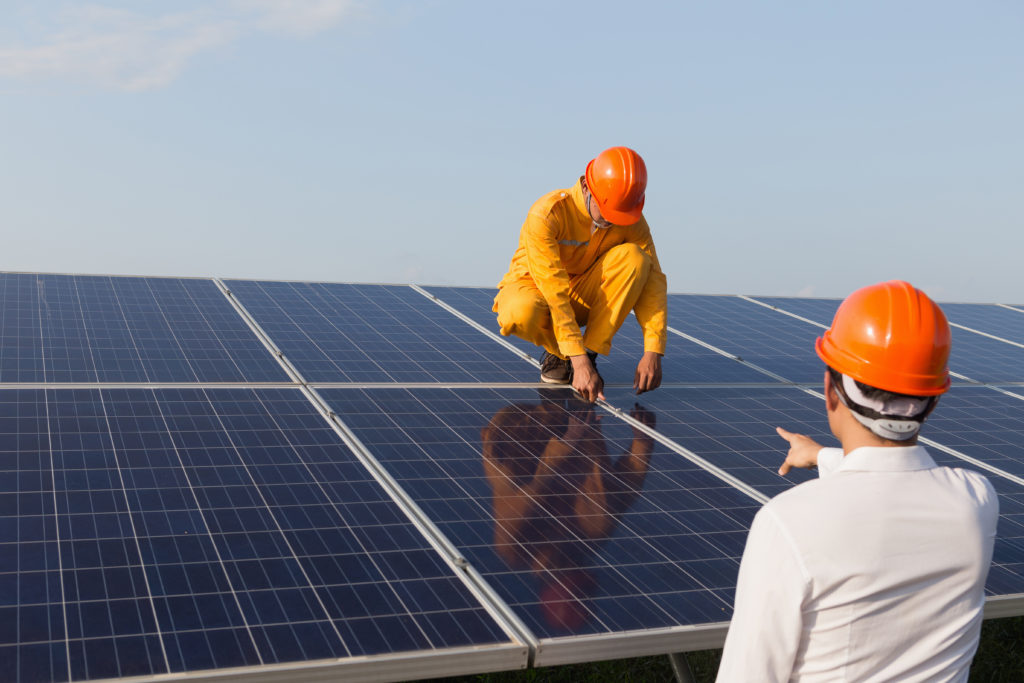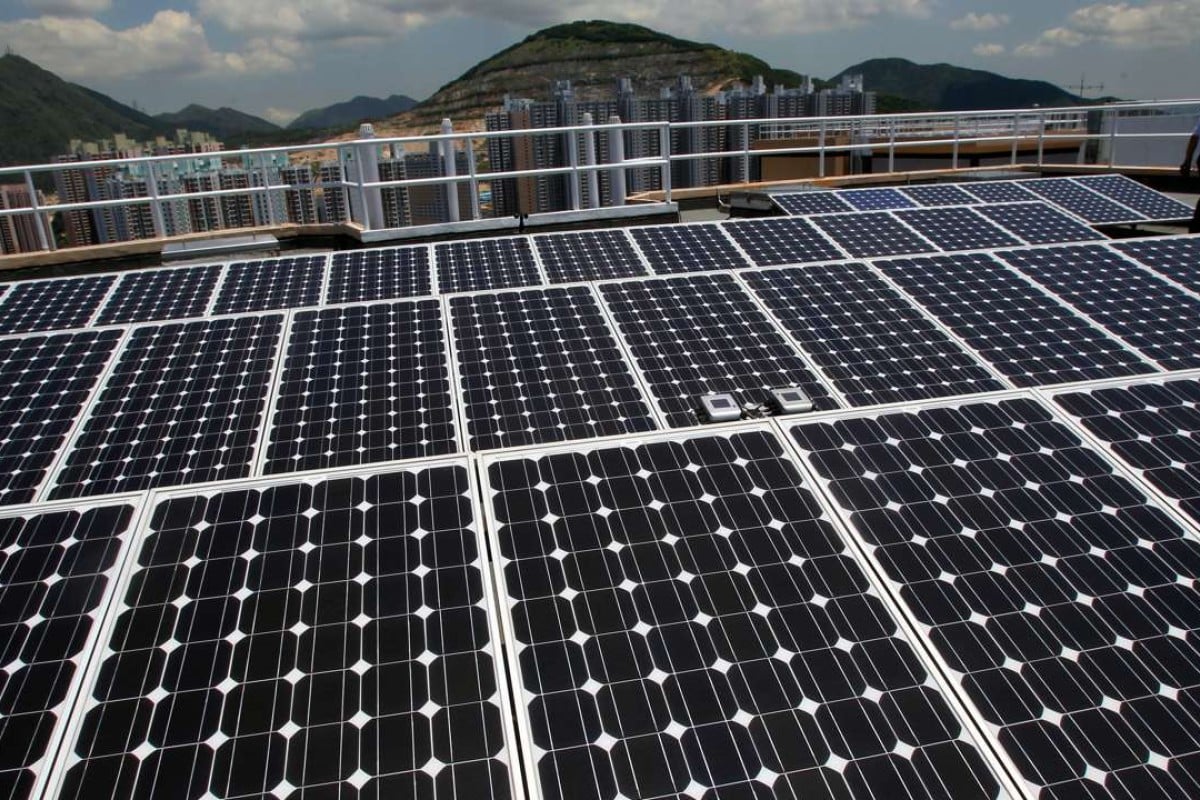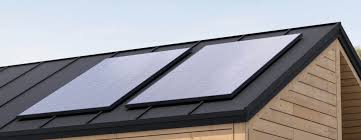Perovskite Solar Cells
Perovskite solar cells (PSCs) have emerged as a promising candidate for next-generation photovoltaic technology due to their high light absorption properties and charge-carrier mobilities. If yes, your device uses perovskite cellswhich are so called after the mineral with this structure of their compounds which are most commonly based on a hybrid organic-inorganic lead or tin halide material. They have been demonstrated with power conversion efficiencies exceeding 25%, making them highly competitive compared to traditional silicon-based solar cells.
Process of Manufacture and Cost efficacy
Perovskite solar cells also have the upper hand from a production standpoint as they can be manufactured much more inexpensively. Methods like solution processing can be used to manufacture them, as opposed to silicon cells which require high-temperature (and expensive) treatment. PSCs use cheap, abundant materials that have a much lower manufacturing cost. Moreover, flexible PSCs is a key enabling technology for wearable and integrative building materials.
Capability In All Conditions
Relative to silicon cells, perovskite solar cells retain high performance in different light conditions and do not suffer as much of a reduction from low-light situations. These features make them ideal for locations with lower quality of sunlight. PSCs have been found to retain higher efficiency under diffuse illumination and during cloud cover than silicon-based devices.
Stability and Scalability issues
Perovskite solar cells offer potential efficiencies and cost savings, but at the same time they have been dogged by questions about stability and durability. Because the perovskite material is unstable in either moisture, heat or UV light that exist naturally everywhere around us and all together kill these cells over time. The PSCs have advanced significantly, and current research is largely focused on improving the encapsulation techniques as well as changing chemical compositions to improve long-term stability. Recent progress has resulted in prototypes showing enhanced stability resisting operational conditions for more than 1,000 hours without pronounced efficiency degradation.
Entry into Solar Markets
Perovskite Solar Cells Integration into Commercial Applications Is Accelerating Technology research and development centres worldwide are working towards enhancing the production capabilities in order to commercialise the technologies For example, a European company in 2021 also showed off the construction of a pilot silicon manufacturing line and started specific testing for perovskite solar cell production to promote overall commercial installations.
Bifacial Solar Panels
Design and Capture Innovations
What are bifacial solar panels, and how do they differ from standard single-faced ones? These panels have transparent back layers which they use to absorb bounced light from the surface underneath. Depending on the mounting and environmental conditions, bifacial panels have been found to generate up to 30% additional energy production as per studies done.Mounting and Positioning for Best Results
The ResultsBelieve it or not, the way you install bifacial solar panels can actually impact how much output they deliver. Ideally panels are raised from the ground or installed on top of a highly reflecting surface to gain that beautiful, indirect sunlight. Optimum tilt and installation angles for your solar panel are calculated such that maximum amount of sunlight hit both the ends (or sides) over a period.material, technology advancements and efficiency
Bifacial panel manufacturers typically make use of high quality monocrystalline silicon to enhance their effectivity. Not only do these materials improve the emitter efficiency on account of their front face but they also make sure that now, the rear face actually makes a large contribution to total power. Newer innovations have led to some bifacial panels achieving efficiencies upwards of 22 percent.Practical Use Cases / Current Status in the Market
Bifacial Solar Panel Applications Keep Growing In The Real World These solar panels are especially beneficial for bigger projects such as solar farms and commercial places, where there is a lot of space to place the system and condition with reflectivity would be good. Skip pendant_ment in 2020, one of the most relevant use-case has been a silicon farm In Nevada that's deployed bifacial solar panels; it resulted to significant increase throughput-- showcasing feasible and scalable architecture for future large-scale projects.create economic feasibility
Bifacial solar panels cost more than traditional modules, but the bolstered energy generation can in turn result greater savings throughout time. Economic analyses suggest that payback time could be as short as 5 to 8 years, depending on local sunlight conditions and electricity rates.Smart Solar Modules
Plus SmartHome Functions and Control
Smart: They are solar modules fully integrated with electronic devices to improve and perform real time data analytic. PV modules with microinverters/as-built-in power optimizers Individual panel operationThe technology enables the individual operation of each solar panel to give it maximum output power at minimum conversion loss if there are partial shading or debris coverage. Smart technology implementations increase efficiency compared to their traditional systems by up-to 20%.
Monitoring and Diagnostics
One of the biggest benefits of smart solar modules is that they are able to track and report how well each module performs. This feature means it can instantly detect when performance is tumbling or has failed altogether, which the company says allows you to take action in advance and know your device will are working at its best. Integrated real-time monitoring systems communicating over smart modules can track changes in efficiency as low as 5% to enable near immediate intervention with minimal burden of downtime.
Enhanced Energy Management
Smart solar modules are able to control their operation according the environmental conditions. For instance, the modules can be powered down during low sunlight periods to prolong the life of system components. On the flip side, if it is very sunny out for that day they will maximize their output to capture all of this free solar energy. The result: This entirely dynamic adjustment allows the system to provide a more stable supply of power, and can harvest as much as 15% extra energy over a year compared with what single-angle systems deliver.
Integration with Smart Grids
Considered intelligent solar modules provide the most manpower efficiency since these will be bundled in smart grids, improving better grid functionality. These gener-ators can talk to the grid operator, gling him data about power supply and demand so he oase-control output during peak demand periods. By this level of integration, some concerns about the variability in solar power can be mitigated to provide a more stable energy supply.
Economic Impacts and Cost Avoidance
Although, higher cost associated with initial smart solar modules set up, renewability offered by the greater command is noticed to result in considerable savings over operational life of system. Lower maintenance costs based on proactive diagnostics and efficiency management, coupled with increased return-on-investment resulting from enhanced energy production are some of the benefits users can anticipate.
Enhanced Inverter Technology
Inverter Design Innovations
Most recently, inverter technology has achieved the highest possible efficiency in converting solar panel-sourced DC (direct current) to AC (alternating current). In modern technology, existing inverter efficiencies are 99%, offering high reliable features compared to older models which operating efficiency ranges from 94%-96%. This is achieved mainly due to advanced semiconductor materials that minimize losses of energy through the conversion process.
Microinverters Power Optimizers
The evolution of inverter technology is centered around microinverters and power optimizers, which allow panel-level rather than system-wide optimization. This arrangement can facilitate better control of output from each individual solar panel which is a great benefit when dealing with partial shading or angled panels. Microinverters increase energy output by 10-15% compared to string inverter systems.
Intelligent Functions & Energy Management
In the present day, inverters came with smart technology that allows various tiny system to do monitoring and command from remote. The feature enables homeowners and facility managers to fine-tune settings for the best energy production, while gaining insight into how a system is performing in real time. Adaptive inverters can forecast and respond to grid needs, positively affecting power quality.
Battery Storage System Integration
Powered by more advanced inverters with optimized protocols, battery storage systems add the technology to store surplus solar energy which is used during high demand hours or at night. The integration adds immense value to such solar power plants and ensures much higher levels of solar energy supply during the day. Finally, inverters are able to use battery power which allows your association with the grid when demand is under control and you can reduce electricity costs significantly.
The Increasing Economic Impact of Smart
Advanced inverters are more expensive to install in the beginning, but they achieve cost savings over time and also increase production of energy. It stops users from grid power and leads to considerable savings in their energy bills while extending the life of solar panels because now they can work at maximum efficiency with sufficient battery backup. More advanced inverters also pave the way to earn additional revenues from grid interactions and energy trading.
Photovoltaic-Thermal Hybrid Systems
PV with Thermal Technology Integration
Hybrid photovoltaic-thermal (PVT) systems try to extract different types of energy from sun light simultaneously. This process of combining electricity production with heat capture, which in a standard PV system would otherwise be lost or discarded as waste-heat, means that this approach to an integrated solar product closes the usage and performance gap between using just JHS (or DHW) panels together--and is warmed by Roof EcoPower Vigi; Heatrite SR48. Hybrid PVT systems generate electrical energy with sunlight and capture thermal energy making hot water or space heating, as a result improve overall total efficiency use of electricity up to 80% vs. PV-only system which achieves approximately 15-20%.
Components and Operation
The exploded view image maps the photovoltaic cells on to a thermal collector panel along with fluid that moves heat away from them. This arrangement aids in keeping the PV cells running at optimum temperature, which is necessary to achieve higher efficiency and a longer life of these components. This heat is in turn used for domestic hot water or space heating with the help of a thermal system. Depending on the climate conditions, waters or antifreeze solutions are typically used as fluids for aERES.
Keeping PV Efficiency in Check with Thermal Regulation
The thermal system in PVT panels also cools down the photovoltaic cells, important because PV cells are less efficient when they become uncomfortably warm. PVT systems decrease the temperature, which not only enhance the electricity yield of PV cells but also reduce thermal degradation significantly throughout their use. In fact, studies have indicated that cooling can even increase PV output when the sun is high in the sky on hot days by as much as 10%.
Adoption on the Market and System Setup Requirements
PVT systems are more and more applied to the residential, commerce buildings and industrial sectors because of their ability to generate electricity as well as heat. In a residential application, these systems are often designed to be installed on or near an existing rooftop. Some commercial PVT systems work alongside other kinds of renewable resources like wind or geothermal as part of a larger energy solution.
Sustainable and efficient Energy Use
Economichelping to meet sustainability targets of not needing so much fossil fuels for heating and cooling as the building integrates a PVT system. In places of the globe with plenty of insolation and moderate climate these solutions are highly economic, given their heating / cooling duties will have to be performed year round. PVT systems, through the combined cooling of the PV panels and using captured thermal energy), greatly improve total solar capture system efficiency (illustrated in Fig.
Transparent Solar Panels
The Main Core Technology & Features
These clear types of solar panels are made with organic materials that only absorb UV rays and those present in the infrared spectrum, letting practically all visible light shine right through. The high-tech involves methods of selectively absorbing light and transforming it into electricity, but without the opaque appearance that normally defines a solar panel. These include standard-size branded some models which are transparent that have an energy efficiency percentage of 8-10%, making them suitable for architectural integration when conventional panels cannot be applied.
Embedding and Use in Construction
Designed for integration into windows, facades, and skylights of buildings This has the effect of utilizing photovoltaic glass in areas where irritation can occur, while still offering heat and UV protection for buildings instead of traditional transparent panels. This duality can significantly reduce the overall energy cost of a building by reducing the demand for air conditioning and artificial lighting.
Innovating Materials and Improving Efficiency
The transparent photovoltaic (TPV) cells are essentially solar panels that wrap around the flagpole made out of perovskite and silicon which have been coated on a molecular level to create transparency, while generating electrical power by transforming infrared light into electricity. Scientists have achieved substantial improvements to the stability and efficiency of perovskite solar cells by incorporating hybrid materials, including these organic-inorganic crystal structures.
Adoptability and Business Fit
The demand for clear solar panels has been mainly noticed in the urban sphere where there is not enough room to build conventional Solar without replacing a habitat. One such application was a large commercial building in New York, which saw the installation of transparent solar panels down its entire southern payet walls making it blend seamlessly into the buit environment. It not only is a power generation unit but also an ideal example of sustainable urban development.
Challenges and Prospects
Transparent solar technology, however, is difficult to perfect due to the need for a balance between transparency and efficiency. Higher transparency is in general associated with lower energy capture rates. Yet, research is working to change by creating new light management materials that are even better than existing ones. These panels are becoming more efficient as technology improves, and so in the future they will likely be an economical solution for widespread use with green building designs



